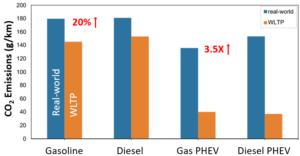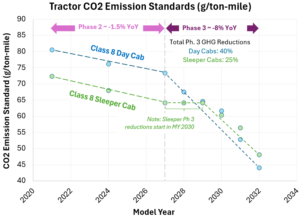Regulations
Summary of the near-final Euro 7 Regulation for passenger cars and heavy-duty vehicles
Minimal changes to LD limits, particles down to 10nm, limits for tires and battery state-of-health
We have covered the unfolding of Euro 7 emission standards for light- and heavy-duty vehicles in several past articles.
There seems to be light at the end of the Euro 7 tunnel: after several rounds of negotiations between the EU Commission, Council and Parliament, a near-final regulation has been published.
Here is a brief summary. If you need more details or have questions, please get in touch. Please understand that regulations are complex and need interpretation – this article will be updated based on further reading and any feedback.

Testing
Light-duty:
- Emission and evaporation tests can be done with any market fuel and lubricant within the specifications by the manufacturer.
- Tests include 4-phase, chassis dyno WLTP and RDE testing, to be done on road based on normal driving and exclude biased driving.
- Particles down to 10 nm included in the PN limit.
- Brake particle testing to be done according to UN GTR
Heavy-duty:
- WHTC/WHSC engine bench + RDE.
- Valid windows defined as those with average engine power > 6% of max. engine power.
- Particles down to 10 nm included in the PN limit
- Procedures for CO2 emissions, fuel and electric energy consumption, electric range and power for individual vehicles should be introduced in emission type-approval. VECTO to be used for heavy vehicles.
In-service conformity and market surveillance checks shall be performed by the Commission and may be performed by third parties.
On-Board Monitoring
- Change from on-board diagnostics to on-board monitoring (OBM) which will provide continuous monitoring of emissions and urge the user for repairs and maintenance.
- OBM system will monitor emissions of NOx, NH3 and PM and detect exceedance of 2.5x that of emission limits.
Batteries
- Monitoring of battery state of health required
- Minimum performance requirements for battery durability of passenger cars and light commercial vehicles (LCVs) introduced.
Geofencing
Euro 7G vehicles equipped with ICE and geofencing technologies will inform user when batteries are near empty and stop the vehicle if not charged within 5 km after warning inside the geofencing area.
Timing
M1, N1 vehicles: 30 months after final regulation for new types and 42 months for all vehicles
M2, M3, N2, N3 vehicles: 48 months after final regulation for new types and 60 months for all vehicles
Sign up here to receive such summaries and a monthly newsletter highlighting the latest developments in transport decarbonization
5-Min Monthly
Sign-up to receive newsletter via email
Thank you!
You have successfully joined our subscriber list.
Recent Posts

SAE WCX 2024 – Year in Review
The SAE World Congress was held in Detroit and covered a broad range of topics pertinent to transport decarbonization. Here’s a link to download presentations on emissions and sustainability.

Real-world CO2 emissions from cars and vans in Europe are 20% higher than certification values
EU Commission finds real-world CO2 emissions from cars and vans in Europe greatly exceed lab certification values. Plug-in hybrids are not being charged as much as estimated.

US EPA MY 2027-2032 Heavy-Duty Phase 3 GHG Standards
The U.S. EPA has finalized the Phase 3 GHG rule specifying CO2 emission reductions from heavy-duty trucks and buses over MY 2027 – 2032.
